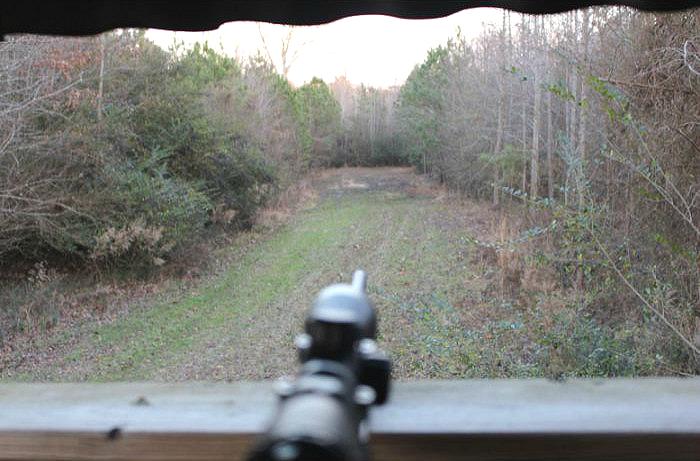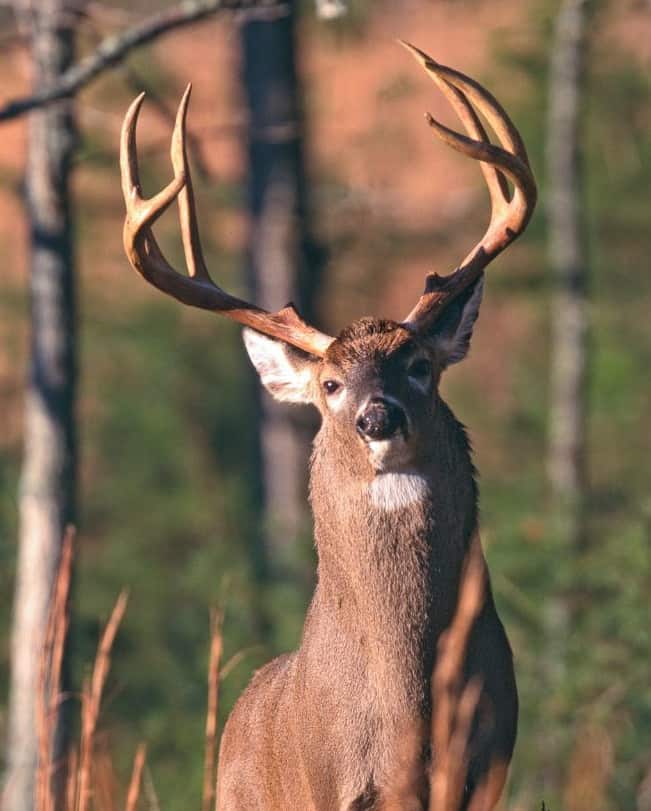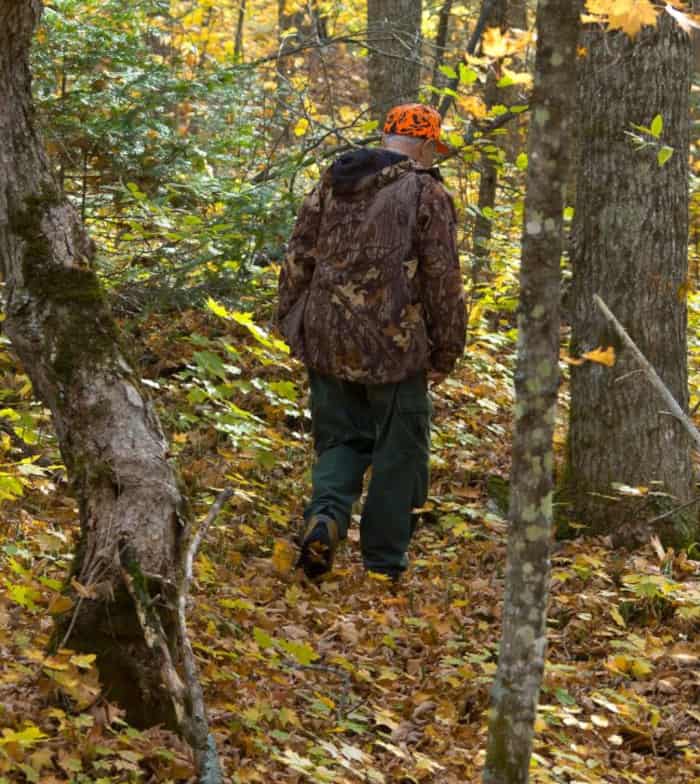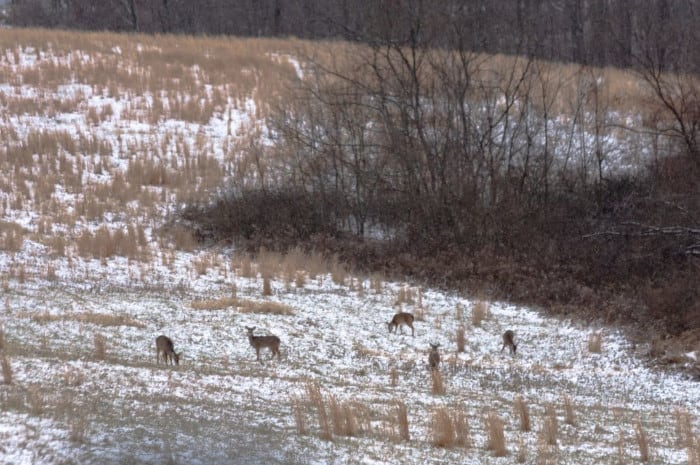Finding a good place to hunt has become one of the biggest obstacles for most modern-day hunters. One potential approach to securing a place to hunt is via a deer lease (also known as a hunting lease). However, hunting leases can be tricky, especially if you aren’t familiar with the leasing process. So, let’s answer this question: what is a deer lease, and how do they work?

Understanding a Deer Lease
A deer lease is a formal agreement between a hunter or group of hunters and a landowner, property owner, or land-holding entity. The lease terms allow the hunter or hunters (commonly called the lessee) to access the land for specific purposes over a specific time period.
In most cases, a hunting lease or deer lease involves the hunter (lessee) paying an agreed-upon amount to the landowner (commonly called the lessor) to access this private land for agreed-upon activities over an agreed-upon term.
In layman’s terms, a deer lease is like renting an apartment; only instead of the apartment, you’re renting hunting rights to the property for a certain amount of time.
Types of Deer Leases or Hunting Leases
There are several types of hunting lease formats being used today, and here are the most common formats:
No-Fee Lease
A per-hunt lease is a short-term lease agreement between the landowner and a hunter, allowing the hunter or sportsman hunting rights for a single hunt with no fees. These types of leases are most common on private land where a land owner allows a family friend to hunt their property at no cost, but wants a written agreement (usually a lease or leasing agreement) in place for legal or liability reasons.
Per-Hunt Lease
A per-hunt lease is a short-term hunting lease agreement between the landowner and a hunter hunter and landowner or property manager, allowing the hunter hunting rights for a single hunt. These types of daily leases are most common on hunting ranches or lodges. However, per-hunt arrangements can also be made with private landowners as well.
Per-Season Lease
Much like it sounds, a per-season lease is a short or long-term leasing agreement allowing a sportsman to access the land for hunting only during hunting season. Some landowners prefer this type of leasing arrangement and refer to it as a “season to season lease.” Leasing hunting season to hunting season offers the landowner more flexibility to increase the leasing fees in line with market conditions or inflation.
Per-Acre Lease
A per-acre lease is a hunting lease agreement where the lease is based on a combination of acreage and term. The per-acre lease is the most common hunting lease style and usually offers the lessee year-round access to the property. Many hunters prefer this style of lease as it offers the most flexibility and can typically support a number of hunters.
Per acre leasing also offers the hunter or hunters the best opportunity to practice quality deer management (commonly called QDM) practices and habitat improvements, if desired.
For most hunters, a per acre lease offers the best value to access private hunting land.

Why Consider a Hunting Lease?
A hunting lease or deer lease offers advantages over other hunting land arrangements like hunt clubs, buying land, and public hunting land. A few examples of those advantages include:
Leasing land is significantly less expensive than buying land. In addition, the lease offers the opportunity to hunt the land on a short-term basis without the commitment associated with a land purchase.
A hunting lease is less restrictive compared to a hunt club membership and offers significantly more hunting flexibility than a hunt club.
The hunting pressure and competition on a hunting lease are significantly less than what is commonly seen on public hunting land and hunt clubs.
Depending on the lease terms and state laws, leased hunting land usually offers the option for deer plots, supplemental feeding, and the placement of hunting blinds.
However, hunting leases also come with some downsides, including the following:
The single most significant disadvantage to a hunting lease is the cost. Deer and hunting leases tend to cost substantially more than hunt club memberships and far more than public land.
Most leases are on a shorter-term basis, so the leasing costs increase over time, and external competition for the lease usually increases as well.
How Much Does a Deer Lease Cost?
In today’s market, a hunter can expect to pay lease rates between $10 and $65 per acre. The dollar figures per acre vary significantly across the United States and depend on several factors such as:
Size of the Hunting Parcel
The number of acres being leased plays a role in pricing as most leases are based on a per-acre cost. However, larger tracts of land with higher acreage usually see a decrease in the average price per acre.
Species Available on the Land
A piece of property that primarily has deer on it will most likely cost less per acre than a tract that offers an opportunity for deer, turkey, and waterfowl hunting.
Although we are primarily focused on deer hunting for this post, it’s worth noting that leases for specialized hunting, such as upland birds or waterfowl hunting, can be more expensive per acre than the average deer hunting property.
Quality of the Available Game Species
A tract of land that was previously leased for hunting will most likely cost less per acre compared to a parcel of land that hasn’t been previously hunted or a tract of land with excellent deer genetics. A parcel of leased land under QDM is generally priced higher than an unmanaged tract of land.
Land with verified images of trophy deer, turkey, or other species of wildlife will most likely command a higher price than land without verified evidence of a few trophy deer, or some photographic inventory of the wildlife species.
Quality of the Land Tract
The overall quality of the land itself, along with its geography, can play a role in the lease pricing as well. For example, a tract of land with a diverse ecosystem of hardwood trees, fields, ridges, etc., may command a higher price than a tract of land with only pine trees or 90% open fields.
Let me also make an observation about land that has been timbered or where the trees have been harvested for wood. I’d be a bit careful about leasing a tract of land that has been heavily logged, and here’s why: once land has been logged, most landowners will replant pine trees only because pine trees grow much faster than hardwood trees and will be available to log again sooner than a hardwood tree species.
Hardwood trees provide most of the mast crop (mast is nuts like acorns, walnuts, etc.), which is a major winter and fall food source for whitetails. Unfortunately, most pine tree species only produce pine cones, which deer don’t care to eat. Not having a mast crop available for deer means that you may struggle to keep a healthy deer population on that specific land tract without food plots.
My experiences with pine land leases have been so-so. I’d be hesitant to lease a piece of property that had been heavily logged without seeing some trail camera data to get a feel for the whitetail population in the area.
Of course, that’s just my experience, and yours may be the complete opposite.
Included Amenities or Benefits
The lease cost can also be impacted by any amenities or benefits the property offers. For example, a tract with a clubhouse, building, or fishing pond will most likely cost more per acre than the same tract of land without those benefits. Hunters may be interested in those types of amenities and be willing to pay slightly higher lease rates.
I typically look for hunting land for lease that includes a pond or lake so I can take my kids fishing.
Lease Market Value
Another component of deer lease pricing is the current market value of comparable leases in the surrounding area. For example, if most leases in an area seem to be going for $20 per acre, expect to pay at least that amount or more.
Availability of Leased Land in the Area
In addition to the market value of hunting leases in a specific area, the number of available leases can also impact leasing costs. The fewer the number of available hunting leases in an area drives the price per acre up, while an abundance of available leases in an area may push the price per acre down.

Hunting Lease Terms and Conditions to Consider
There really isn’t a universal leasing format universally used for hunting leases. Because of this, the deer lease documents come in all different designs and layouts. While I can’t go over every single aspect of what may or may not be included in a lease, here are a few things to be aware of with leases:
ATV or Offroad Vehicle Usage
Check the lease for ATV access or a specific supplement on ATV usage. Some landowners may have an issue with ATVs and may not want an ATV to be ridden on their property.
If you encounter a lease that prohibits using an ATV, consider this as activities like hanging deer stands, hauling deer out, food plot preparation or maintenance, etc., may become more difficult without the help of an ATV.
If ATVs are allowed on the land, be clear about the landowner’s rules for cutting or maintaining the ATV trails.
Are Permanent Stands Allowed?
Check to see if the lease contains verbiage that defines a permanent deer stand, and then see if the lease prohibits or allows the lessee to add or build permanent deer stands. The definition of a permanent stand varies from state to state, so it’s essential to understand what constitutes a permanent stand in your state.
If permanent stands are prohibited, you’ll have to use hanging, portable, or self-climbing tree stands.
Terms of The Lease
The lease term defines the amount of time that the lease is valid. For the hunter, longer is always better, while most landowners prefer a shorter lease period, like 1 to 2 years. However, if you know the land to be leased will work for your needs, I’d try to get the lease for at least three to five years if possible.
Are Food Plots Allowed?
Before signing a deer lease, check to see if the landowner will allow food plots to be planted or any supplemental feeding to occur. Food plots are integral to deer management and may require some land to be cleared, tilled, planted, etc., so the owner’s permission is needed.
If the landowner doesn’t allow food plots (and some may not), then see if they will allow deer feeders to be utilized.
Identify any Off-Limits Game Species
Some landowners may include restrictions in the lease prohibiting certain game species from being harvested off a tract of land.
I’ve had leases where the owner had a provision saying that turkeys couldn’t be hunted and another landowner who wouldn’t allow black bears to be hunted.
Review the lease thoroughly to ensure you know exactly what species are included or prohibited by the lease.
Hunting Lease Insurance
The last major lease-related topic I want to discuss is hunting lease insurance and how it works.
Most landowners assume a certain amount of liability risk when allowing hunters to access their land because the hunter could get hurt and sue the landowner. In addition, a landowner could potentially sue a hunter for any damage (accidental or otherwise) done to their land.
To protect both parties in the lease agreement, I highly recommend specialized insurance called hunting lease insurance. Hunting lease insurance goes by several names, including hunt club insurance, hunting land insurance, and leased land liability insurance.
This type of insurance protects the landowner and the lease hunters, their families, and guests in the event of an accident or injury.
Most landowners will require proof of hunting lease insurance and/or will want to be added to the policy as well for coverage. Even if the landowner or leasing company does not require hunting lease insurance, I strongly suggest you still get it to protect yourself and anyone else on the lease.
Many insurance companies specialize in this type of insurance, including the following well-known providers:
- American Hunting Lease Association (Ahuntinglease.org)
- Locktonaffinityoutdoor.com (which underwrites for the NRA)
- Outdoor Underwriters (outdoorund.com)
Here’s an interesting fact: while most people believe that the leasing cause of hunting injuries is firearms, it’s actually tree stand-related injuries, followed by ATV-related injuries.

Read the Lease Thoroughly Before Signing
My last recommendation is to read the deer leasing document thoroughly from front to back, reviewing each lease provision. Most land leases are written to favor the landowner, so keep that in mind as you study a lease.
If you encounter something, you don’t understand or are unsure about, consult an attorney before signing. You’re signing a contract of sorts, so it pays to be clear on the contract terms.
Hopefully, this post has given you a better understanding of deer leases and how they work.

Born and raised in Indiana, Brantley spent his youth chasing deer and turkey and, along the way, developed a passion for bowhunting. Although he still enjoys other types of hunting, his true passion is bowhunting, and he has or will author most all the bowhunting content on this site. Outside of work, Brantley is married and the father of two beautiful little girls. Brantley has worked in the hunting industry, with an emphasis on archery and bowhunting, for more than ten years.





